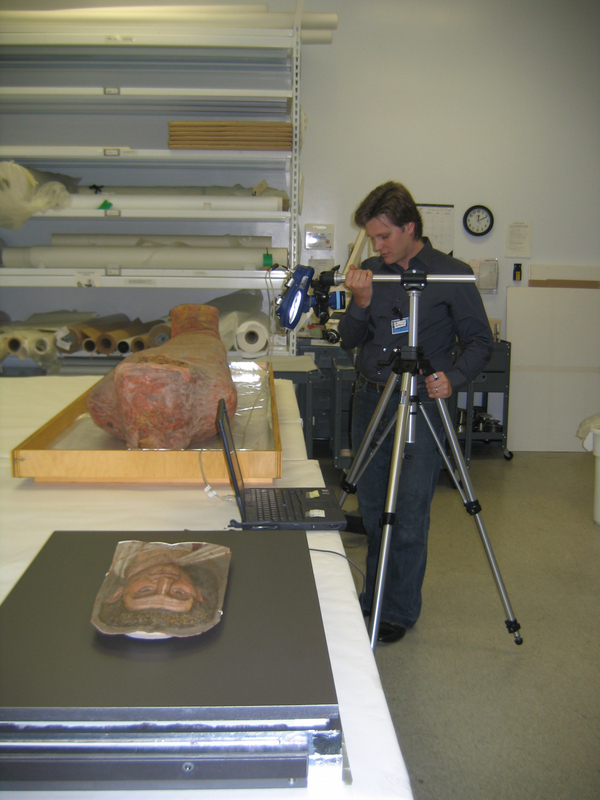The Getty Visits Demetrios

On July 5, Marc Walton, a scientist with the Getty Conservation Institute came to examine one of our mummies, knows as Demetrios. He brought a portable X-ray fluorescence (XRF) machine with him. With this non-destructive technique, he can take readings of different inorganic materials on the surface of our mummy, which will tell us the chemical make-up. Marc wanted to compare both the red lead and gilding found on our mummy, Demetrios, to the red lead found on the Getty mummy, Herakleides. It turns out that the red lead and gold are very similar – they have similar trace elements. The Getty is continuing their research to find out what that all means, but it is possible that these all came from the same workshop. There is also evidence to suggest that the lead used to make the red lead pigment may have come from a silver mine in Spain. When silver is smelted from the ore, lead is a common by-product. The lead would have been used to make the red lead paint. The Getty is also researching this further to determine whether the red lead pigment was made in Spain then traded to Egypt, or if the raw lead was traded to Egypt and the pigment made there. It is also unclear why the color red was chosen. Perhaps it was because the color red was thought to ward off danger. Sometimes, the more we find out, the more questions we have – there is still a lot to learn about our mummies! Check back next week to find out what other techniques we are using to learn more about Demetrios.

Tina March is an assistant conservator of objects at the Brooklyn Museum where she has been since receiving her M.A. in Conservation from Buffalo State College in 2001. She has a B.A. in Art Conservation from the University of Delaware. Previous internships include The Art Institute of Chicago, the Guggenheim Museum and The National Museum of the American Indian.
